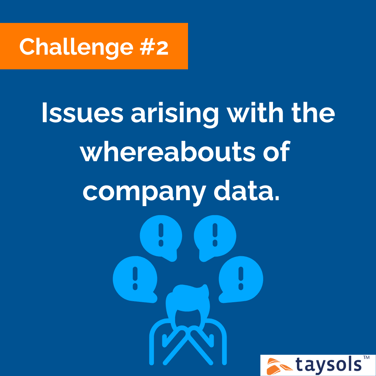As organisation’s grow, the complexity of three-way forecasting increases, particularly when a company’s operations are siloed, and information is stored individually throughout the business.
Last month we discussed spreadsheets, and the challenges that arise throughout the development of a three-way statement process with the use of multiple spreadsheets. Finance departments are faced with complex data creating which in turn create complex processes and challenges including formula and spreadsheet errors, leading to the inability to properly forecast and creating a lack of agility.
These challenges are exacerbated when individual departments are storing their business data individually, making it difficult for finance managers to access data quickly. We are going to discuss data issues that impacts your business’ three-way forecasting.
-
The granular effect.
For a collaborative three-way statement process, employees performing different roles need quick access to data that is relevant to their area of expertise. Ideally, performing this task with integrity could be as simple as logging into a company’s enterprise performance management system, and locating the information required. However, this is not possible if your organisational departments work within silos and there is no integration of data from different departments.
It’s not uncommon for companies to share data spreadsheets with individual budget owners. The details are granular and budget owners may have the ability to amend, making it difficult to keep track of version control. In addition, not all employees are required to view complete sets of data. When business information is stored in separate spreadsheets, you are unable to view a dashboard tailored to individual needs. For example, a CEO does not need the same granularity compared to what the CFO requires. When a CEO does need information to confirm a three-way statement model, teams need to amalgamate their individual data into one sheet, filter out relevant information and produce a manual dashboard. Not only is this exercise time-consuming but it also slows down cross-company collaboration.
-
Lack of agility.
With the introduction of modern technologies, large organisations have the opportunity of working in agile environments where financial planning and analysis solutions can create forecasts that start strategic conversations. When company data is not consolidated and not easily accessible, companies are unable to create “what if” scenarios when developing their three-way forecast. There are no real-time updates on offer, there is limited scalability, large files have slow usability and file security is at risk, endangering customer and business data.
If a business is growing quickly, and introducing a new product line or service, the three-way forecast model will need to be amended and extended as the business expands. If data is not consolidated across the business, and only one person is responsible for updating a spreadsheet, they may be the only person that can access the information needed making it difficult to have an agile model.
-
Finance divisions not reaching their potential.
As a business expands and profits increase, so does the complexity of three-way financial statements. Finance teams evolve quickly; however, the Finance division has the risk of not reaching its full potential due to limited tools and processes.
For finance teams to pull together a three-way statement model, develop reports, analyse data, and facilitate company-wide decision making, as well as create forecasts that initiate strategic conversations, all necessary data needs to be aggregated and quality control is required. To do this, an informative framework that does not require time-consuming data manipulation is required. Without dedicated EPM solutions and automation, issues for financial analysis compound.
Finance needs to advise businesses, and not consume time gathering and verifying information.
-
The audit trails.
When employees use spreadsheets to capture business data, any team member can make edits without the appropriate governance in place. Without an audit trail, team members can make changes to sheets and there is no way to track who made which change in a cell and when. The responsibility to create formulas lies on the individual data / spreadsheet owner, and with team members making changes, it can be difficult to locate the root cause of a data issue. Without correct audit trails, business can face consequences if reports are not accurate.
How to ensure business data is safe and accessible
The challenges businesses face when their data is not consolidated in an enterprise platform is common in many large organisations. Many finance departments are yet to evolve and adopt tools to simplify their three-way forecasting models. A whole new world of software and services have emerged that consolidates data and removes the reliance on spreadsheets. New-age software has been developed to manage data and automate processes for finance departments within organisations. These Financial Planning and Analysis (FP&A) tools have reporting capabilities that decrease the time it takes to access company data.
FP&A tools ensures that every employee receives and can access the relevant information for their role only and solve data management needs. User access can be managed by security restrictions and dashboards are developed based on information required.
At Taysols we work with Enterprises to ensure they are simplifying their Financial Planning and Analysis process for a seamless three-way forecast. We implement Enterprise Performance Management solutions from our partners – OneStream, Oracle and Board – into multimillion-dollar businesses allowing employees and management to input, access and view financial data quickly.


